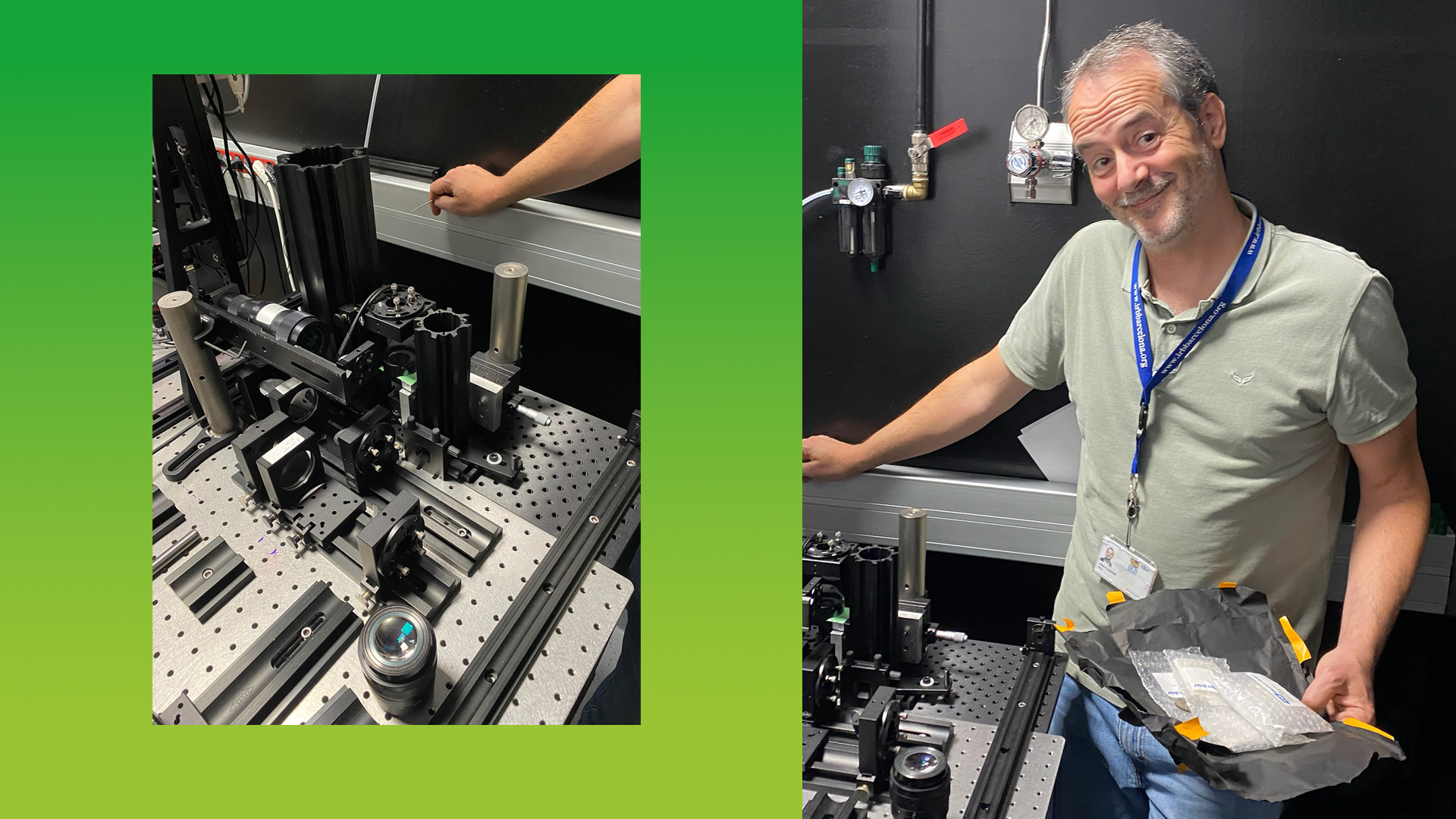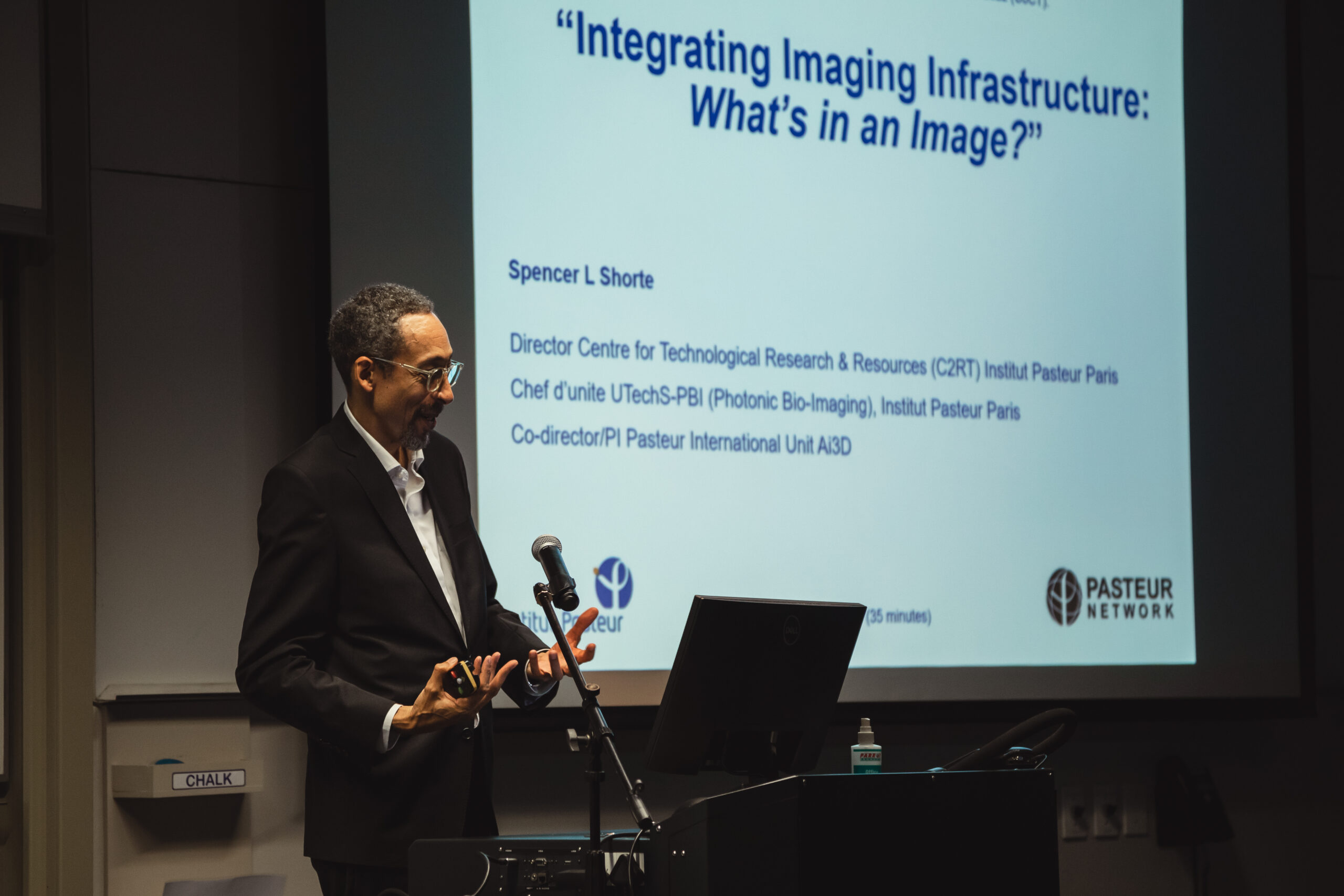
IMPRESS 1st Workshop on Collaborative Advancements in TEM: An engaging and interactive workshop
The first IMPRESS Workshop on Transmission Electron Microscopy (TEM) advancements gathered scientists and stakeholders for two virtual sessions in early November 2024, Co-organized by Euro-BioImaging and CERIC-ERIC.
Attended by over 65 participants daily, the event spotlighted breakthroughs in TEM, including new electron sources, detectors, data processing, and in situ methods.
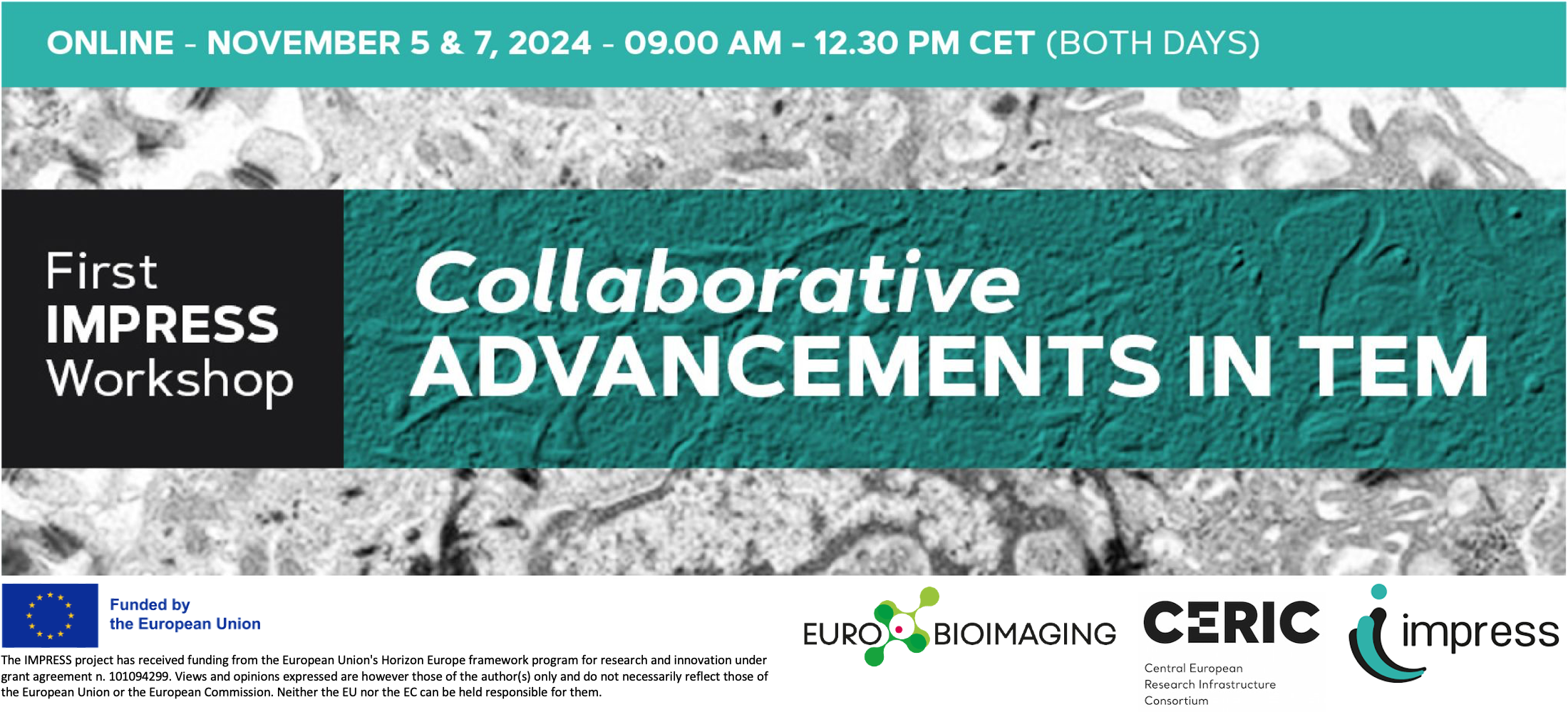
Transmission Electron Microscopy: Innovation, accessibility and Interoperability
At the workshop, participants delved into pivotal advances in TEM technology, such as high-resolution electron sources, event-driven detectors, real-time bioimaging, and data processing aligned with FAIR principles.
In her opening address, Regina Ciancio, IMPRESS Project Coordinator, highlighted the project's dedication to advancing TEM capabilities.
Discussions covered the demand for improved electron optics, detector performance, and real-time TEM applications. Attendees addressed current limitations and explored creative solutions to these challenges, emphasizing the need for enhanced interoperability in TEM.
SESSION 1: Electron Sources, Optics and Detectors, Automation
On November 5th, workshop presentations highlighted key advances in TEM, including electron sources, optics, and data automation.
Axel Lubk (IFW Dresden) introduced a novel multi-purpose electron gun prototype and advanced simulation techniques designed to deliver precise control of electron beams. Luiz Galvao Tizei (CNRS) demonstrated event-based detectors, which capture individual electron interactions, enhancing studies of rapid electron dynamics.
By implementing novel experiments based on electron phase modulators and event-based detectors, IMPRESS aims to make today's state-of-the-art experiments routine in the near future.
Luiz Galvao Tizei - CNRS
A data management session led by Ruggero Lot and Federica Bazzocchi (AREA Science Park) discussed the FAIR principles and interoperability solutions, sparking discussions on balancing efficiency with technical needs in TEM applications.
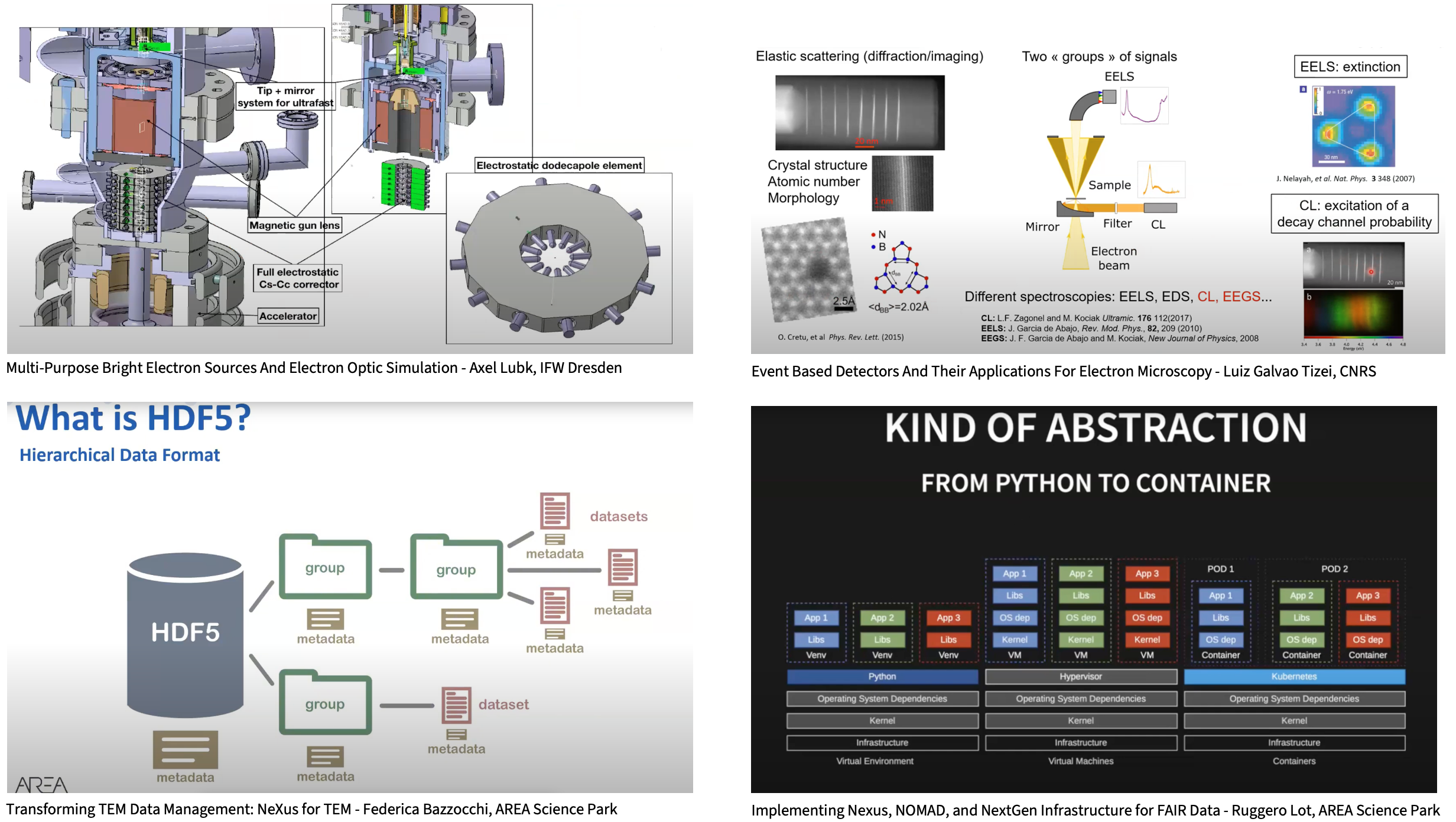
SESSION 2: Real-Time Observation Techniques in Energy and Bioimaging Applications
The 2nd session (November 7th) broadened its scope to include in situ, Operando, and correlative techniques, allowing for real-time observation of materials under actual working conditions. Paolo Ronchese (Area Science Park) introduced advanced MEMS (Micro-Electro-Mechanical Systems) devices designed for Operando research in both liquid and solid-state batteries. These innovations are timely, as the role of TEM in energy storage research is becoming increasingly important to meet the growing demands of electric vehicles and portable electronics.
The development of interoperable cartridge-based systems for studying electrochemical processes at the liquid and solid state will provide scientists with the possibility of gathering insightful and complete information through correlative in situ studies performed both at electron microscopes and synchrotron beam-line facilities, without altering the experimental conditions from one analysis to the other.
Paolo Ronchese - Area Science Park
Alba Garzon (ICN2) presented recent advancements in MEMS-based cells for Operando catalysis in CO2 reduction, detailing techniques for in situ material characterization. She emphasized the need to develop a specialized photocatalytic device, as such technology is not yet commercially available.
Focusing on multi-purpose carriers for Operando bioimaging applications, Anjusha Mathew (Maastricht University) highlighted progress in cryogenic carriers for bioimaging, which enable researchers to analyze biological samples without degradation as they transition between imaging platforms. Additionally, automated sample handling systems are set to facilitate seamless specimen transfer and preservation.
Through the development and utilization of a universal cryo-biological sample transfer device for different imaging modalities and automated bio-sample preparation and handling systems for TEM, we enhance the adaptability and correlation of TEM with other imaging techniques.
Anjusha Mathew - Maastricht University
Alessandro Nicolaou (SOLEIL) discussed soft and hard X-ray beamlines, with a focus on the SEXTANTS beamline at the SOLEIL synchrotron. Alessandro provided insights into correlative spectroscopies, such as Resonant Inelastic X-ray Scattering (RIXS) and Electron Energy Loss Spectroscopy (EELS), which enhance researchers' ability to study complex material transformations and properties.
Last but not least, Amir Tavabi (Forschungszentrum Jülich) introduced time-resolved TEM techniques for observing ultra-fast material transformations. To address challenges in detecting rapid chemical processes and dynamics, he proposed laser-free approaches as alternatives to conventional laser-based methods for time-resolved TEM.
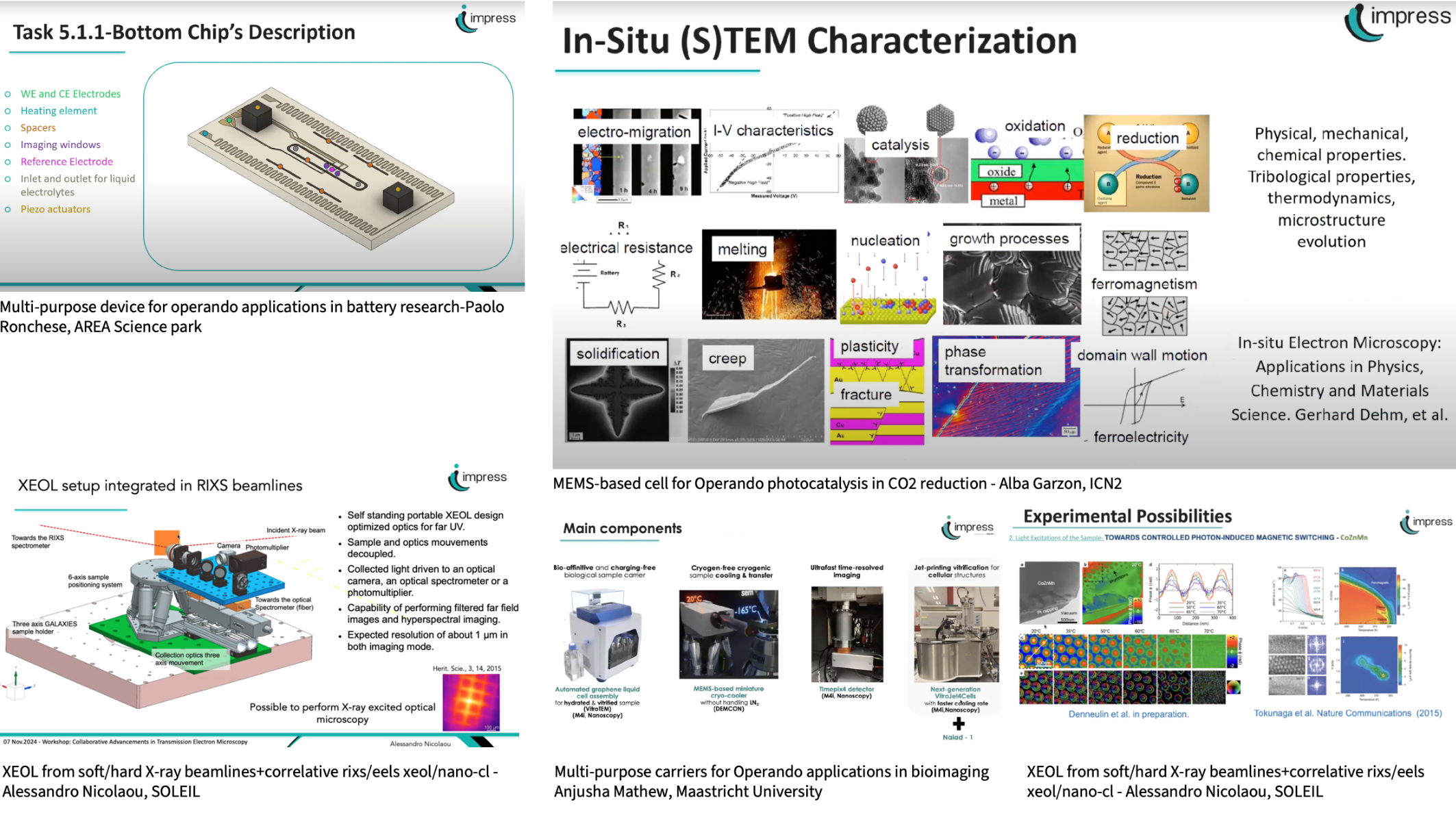
The IMPRESS workshop: a hub for knowledge exchange
In addition to the interesting talks, the interactive breakout sessions provided participants with a valuable chance to connect and directly discuss with experts. These discussions spanned diverse topics, including the technical limitations of TEM detectors, beam shaping, data-sharing protocols, and bioimaging techniques.
Participants highlighted the importance of standardized data formats to enable smooth data exchange and integration. They underscored the need for interoperable coding standards and consistent metadata across TEM configurations.
The first IMPRESS Workshop highlighted the increasing need for innovation in TEM technologies to meet the advancing demands of materials science, bioimaging, energy research, and other fields. Gathering researchers, developers, users, and other stakeholders, the event enabled the sharing of technological advancements and provided a collaborative platform to address current challenges and future directions in TEM technology.
For those who missed the workshop, recordings of both sessions are available on the official Euro-BioImaging YouTube channel.
Article adapted from an article on the IMPRESS website.
More news from Euro-BioImaging


